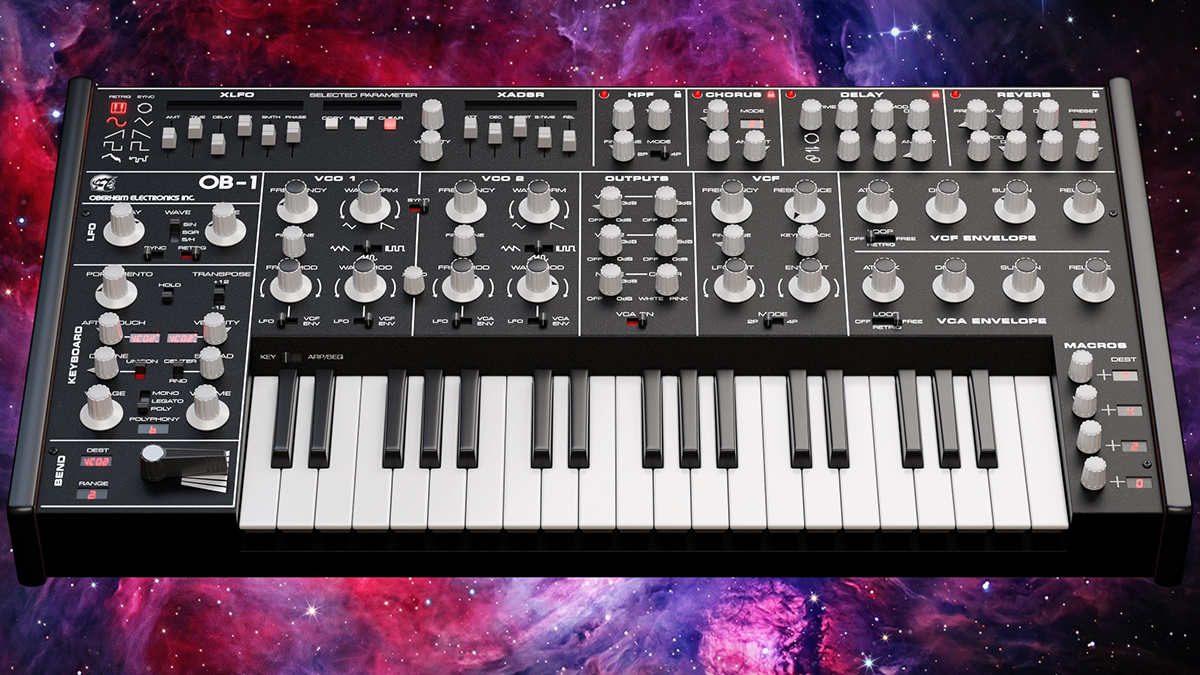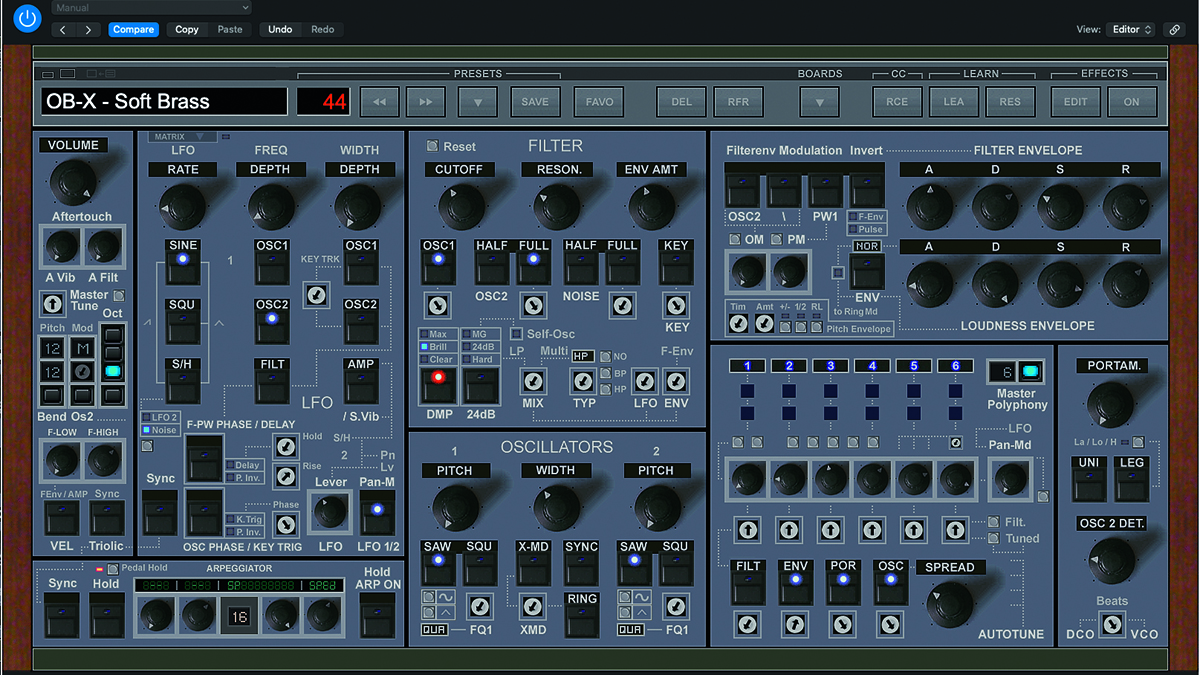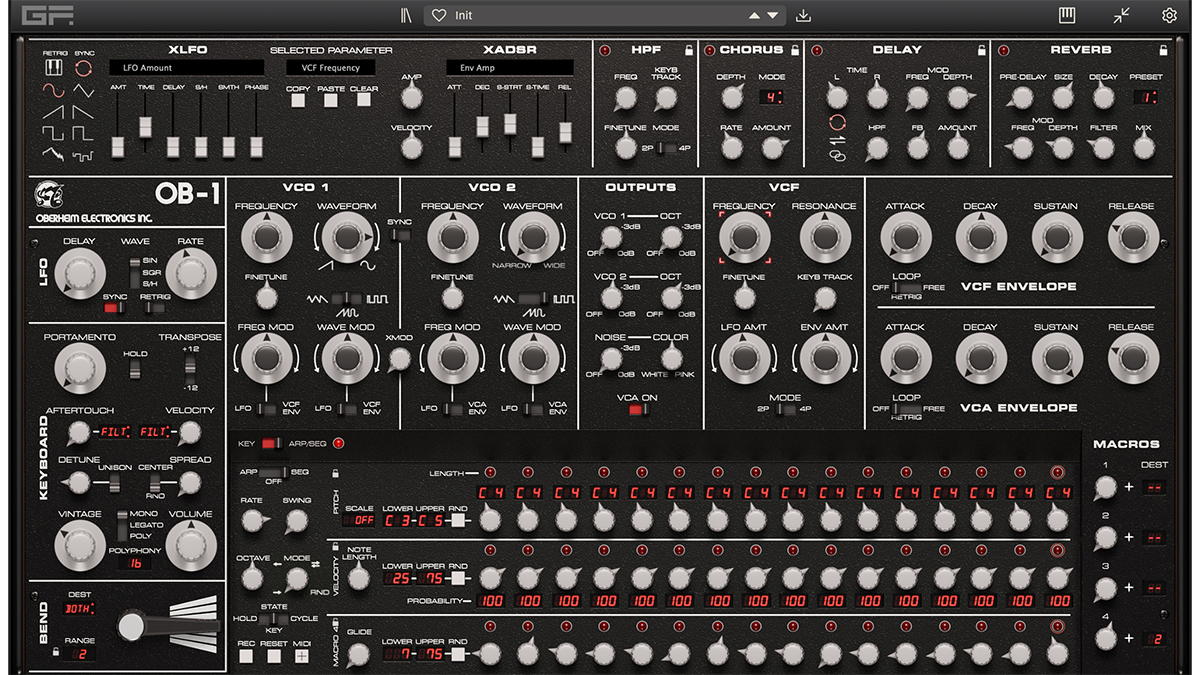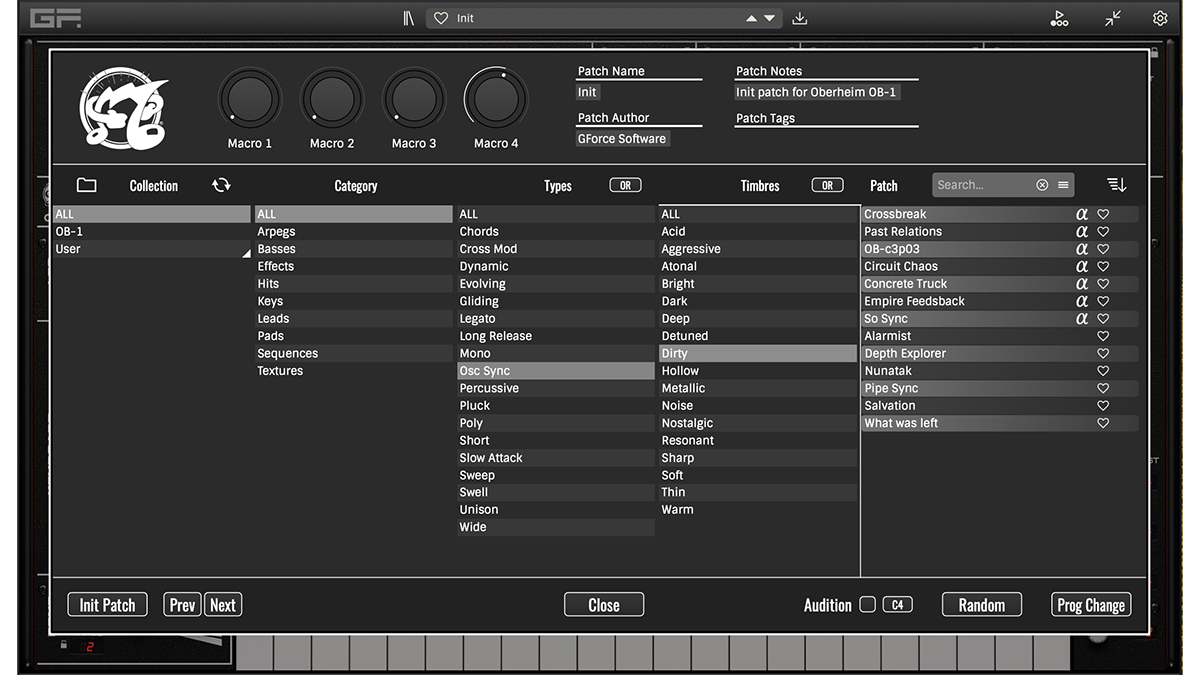MusicRadar Verdict
One of the best-sounding synths we have heard recently, with a beautifully clear interface which is packed with modulation potential. A future classic, based on a definitive vintage original.
Pros
- +
Enormous sounding synthesizer, with wonderful bass extension.
- +
Up to 16-note polyphony, or shake the room with Unison mode.
- +
The filter is just beautifully subtle, or rip-roaringly raucous.
- +
The Sequencer section is so much fun!
- +
It’s as versatile as it is beefy, in sonic makeup.
Cons
- -
No aftertouch or velocity control of the Macros.
MusicRadar's got your back
GForce Oberheim OB-1: What is it?
There’s something very Star Wars about this latest release, emblazoned with the badge of Oberheim. Firstly, there’s an overwhelming sense that the GForce is with us, while the synth itself is a software recreation of the seldom seen OB-1.
Leaving brown-hooded cloaks to one side, the OB-1 is an astounding piece of software. Forged with the blessing of Tom Oberheim, this is another faithful reconstruction of a rare synthesizer.
Designed as a self-contained monophonic synthesizer, the OB-1 was originally produced in 1978. It was intended to be a replacement for its predecessor, the Oberheim SEM, and was one of the first analogue synths to allow the saving of patches. Well, most of the patch information; elements such as LFO were not stored, annoyingly.

GForce Oberheim OB-1: Performance and verdict
No such lapses in memory here though, as GForce has produced a thumpingly good recreation, and we use that adjective advisedly, because the extension in the bottom-end frequencies are completely sublime. If you need a plugin synthesizer for basslines, the OB-1 will not disappoint in any wave-shape or form.
This leads us seamlessly to the enhancements that GForce has engineered, over the original OB-1. Polyphony has been extended up to 16 voices, with the added bonus of a Unison mode, should the floorboards not be quaking enough already.

• SonicProjects OP-X PRO-3
Inspired by the Oberheim Matrix, the PRO-3 is a superb plugin which is packed with Oberheim inspiration and '80s culture.
• Cherry Audio Synthesizer Expander Module
It might be based on the OB-1’s predecessor, but this mono-recreation is nothing short of spectacular, especially for free!
The intrinsic sound identity stems from two VCOs, both of which adopt waveforms that can be modulated. Apart from the usual Square to Pulse, you can adopt a Saw to Sine or Triangle, depending on your VCO selection. The oscillators are them blended via a mixer, which also provides sub-oscillator capacity, for both VCOs.
The all important filter section provides a switchable 2 or 4-pole filter, which does not disappoint. The accompanying Resonance control is exceptionally lively, and brings on a state of squealing fairly quickly. The capacity for filter engagement and creativity excels here, with key follow providing scope for tuned tracking.
Want all the hottest music and gear news, reviews, deals, features and more, direct to your inbox? Sign up here.
As the main filter is low-pass in design, GForce has included an additional high-pass filter, which is also functional in 2 or 4-pole modes. This feels like a pacifying inclusion, with a slight hark back to the filter from previous Oberheim products, such as the SEM.

Gating
The two included envelopes are both 4-stage, with a number of different modes of operation. This includes re-triggering and the ever desirable loop mode. In common with other GForce products, the XLFO and XADSR components inspire the creation of complex modulation routings. This extends to pretty much anything on the panel, and as such, allows all sorts of time-variant modulations, which can include the modulating of envelope phases.
If this is the sort of thing that gets your creative juices going, four macros can be assigned to multiple locations, allowing combined real-time control of parameters across the panel. Lurking underneath the keyboard’s facade, a beautiful three-lane 16-step sequencer and arpeggiator is on-hand for step-based patterns. The third sequencer lane is hardwired to Macro 4, meaning that you can create some pretty exceptional modulation interest at the sequential level. This had us amused for many hours!

What's in a macro?
Macros can often be slightly misunderstood and neglected, particularly on software synthesizers, so it's important to take a moment to digest the implications of their potential. In essence, the macro pots contained within the OB-1 can be assigned to one or more destinations. You may decide to route a macro to the VCF cutoff frequency, and simultaneously the VCF envelope decay phase. This means that by adjusting the macro pot, you are effecting both elements at the exact same time. The net gain is the ability to create movement in your sound, which goes beyond the basic one-knob-per-function norm.
Regrettably, the macro pots cannot be controlled by elements such as aftertouch or velocity, but Macro 4 is linked to the sequencer section. Extraordinary effects can be created using this element. We have a feeling that once you have discovered the joy of the macro, you may never want to put it away again!
Verdict
We have seen a fair few synthesizers from GForce in recent months, and they have all been pretty outstanding in their own way. However, the OB-1 is a particularly special beast. There are not that many hardware instances around, so it adopts a slightly enigmatic persona, but the sonic output, from the moment you play your very first notes, simply takes your breath away. It is an amazing sounding product, and very capable thanks to its augmentation in operation, geared towards ultimate creativity.
MusicRadar verdict: One of the best-sounding synths we have heard recently, with a beautifully clear interface which is packed with modulation potential. A future classic, based on a definitive vintage original.
GForce Oberheim OB-1: The web says
"It’s hard to find words to express how good this thing sounds. It’s finally a vintage instrument colour worth adding to your arsenal, especially if you’re bored with the sameness of the always-reproduced icons."
CDM
GForce Oberheim OB-1: Hands-on demos
GForce Software
Starsky Carr
Nu-Trix The Synth Guy
The Sound Test Room
GForce Oberheim OB-1: Specifications
- macOS 10.13 or above. Intel or Apple Silicon Mac. Standalone Application, AudioUnit, AAX, VST2, VST3.
- Windows 7 and above. Standalone Application, VST, VST3, AAX.
- CONTACT: GForce Software
- Buy from Plugin Boutique
Roland Schmidt is a professional programmer, sound designer and producer, who has worked in collaboration with a number of successful production teams over the last 25 years. He can also be found delivering regular and key-note lectures on the use of hardware/software synthesisers and production, at various higher educational institutions throughout the UK





